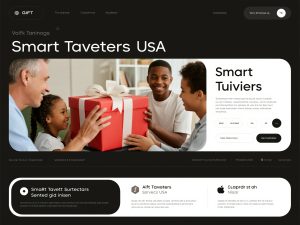Understanding Estate Tax Minimization Fundamentals for Ultra-High-Net-Worth Families The sophisticated landscape of estate tax minimization strategies for ultra-high-net-worth families requires comprehensive planning approaches that address the unique challenges of preserving substantial wealth across generations while navigating complex federal and state estate tax obligations that can reach 40% or higher for the largest estates. Estate tax minimization planning involves strategic coordination of lifetime gifting strategies, trust structures, valuation planning, and liquidity management to reduce the taxable estate while maintaining family control over assets and ensuring adequate resources for surviving family
members. The federal estate tax exemption, while substantial at over $12 million per individual in 2024, may be subject to reduction in future years, creating urgency for ultra-high-net-worth families to implement wealth transfer strategies that take advantage of current high exemption amounts before potential legislative changes. Professional advisory teams for estate tax minimization typically include estate planning attorneys, tax professionals, valuation experts, and wealth managers who work collaboratively to develop and implement sophisticated strategies that achieve optimal tax efficiency while maintaining family wealth management objectives. The regulatory environment for estate tax planning continues to evolve with potential changes in exemption amounts, tax rates, and planning strategies that require ongoing monitoring and adjustment of estate planning approaches to maintain effectiveness and compliance with changing tax laws. Advanced estate tax minimization strategies often involve sophisticated structures such as grantor retained annuity trusts, charitable lead trusts, family limited partnerships, and dynasty trusts that provide significant tax benefits while achieving family wealth management and philanthropic objectives. The timing considerations for estate tax planning require careful coordination of gift timing, valuation events, and trust funding to optimize tax benefits while considering potential changes in tax law, family circumstances, and asset values that could impact the effectiveness of planning strategies over time.Dynasty Trusts and Perpetual Wealth Transfer Strategies The strategic implementation of dynasty trusts for high net worth families provides opportunities to transfer substantial wealth across multiple generations while minimizing transfer taxes and maintaining family control over assets through sophisticated trust structures that can last in perpetuity in certain jurisdictions. Dynasty trusts are designed to benefit multiple generations of family members while avoiding generation-skipping transfer tax through careful allocation of generation-skipping transfer tax exemptions and strategic trust design that maximizes the tax-free transfer of wealth to remote descendants. The selection of trust situs for dynasty
trusts requires careful consideration of state laws regarding perpetual trusts, state income tax treatment, asset protection provisions, and trust administration rules that can significantly impact the long-term effectiveness and tax efficiency of dynasty trust strategies. Trust funding strategies for dynasty trusts often involve gifts of appreciating assets, discounted valuations through entity structures, and installment sales that can transfer substantial future appreciation outside the taxable estate while minimizing current gift tax consequences. The investment management of dynasty trust assets requires sophisticated strategies that balance growth objectives with risk management, tax efficiency, and distribution planning to ensure that trust assets can support multiple generations of beneficiaries while maintaining purchasing power over extended time periods. Distribution strategies for dynasty trusts must balance current beneficiary needs with long-term wealth preservation objectives, often involving discretionary distribution standards that provide flexibility while maintaining tax efficiency and asset protection benefits. The administrative considerations for dynasty trusts include ongoing compliance with trust terms, beneficiary communication, tax reporting, and regulatory requirements that require professional trust administration and ongoing oversight to ensure proper trust operation and compliance. The coordination of dynasty trusts with other estate planning strategies requires careful integration with charitable planning, business succession planning, and family governance structures to ensure that dynasty trusts support overall family wealth management objectives while maintaining tax efficiency and family harmony across generations.Grantor Retained Annuity Trusts and Advanced Transfer Techniques
The sophisticated utilization of grantor retained annuity trusts (GRATs) provides ultra-high-net-worth families with powerful tools for transferring appreciating assets to future generations at minimal gift tax cost while retaining income streams and maintaining some control over transferred assets during the trust term. GRAT strategies involve transferring assets to an irrevocable trust while retaining the right to receive annuity payments for a specified term, with any appreciation above the Section 7520 rate passing to remainder beneficiaries free of additional gift tax consequences. The effectiveness of GRAT strategies depends on asset appreciation exceeding the Section 7520 rate, making GRATs particularly attractive for volatile or high-growth assets that have the potential for significant appreciation during the trust term. Rolling GRAT strategies involve creating a series of short-term GRATs that can capture appreciation while minimizing the risk of grantor death during the trust term, providing opportunities to transfer substantial wealth with minimal gift tax consequences over time. The selection of assets for GRAT funding requires careful consideration of appreciation potential, volatility, income generation, and valuation characteristics that can impact the effectiveness of the GRAT strategy and the amount of wealth transferred to remainder beneficiaries. Charitable lead annuity trusts (CLATs) provide similar wealth transfer benefits while supporting charitable objectives, with annuity payments made to charitable organizations during the trust term and remainder interests passing to family members at reduced gift tax values. The valuation considerations for GRAT planning often involve discounting strategies through family limited partnerships, limited liability companies, and other entity structures that can reduce the gift tax value of transferred interests while maintaining family control over underlying assets. The coordination of GRAT strategies with other estate planning techniques requires careful timing and integration to maximize wealth transfer benefits while avoiding potential conflicts or adverse tax consequences that could reduce the effectiveness of overall estate planning strategies.

Estate Liquidity Planning and Asset Management Strategies
The critical importance of estate liquidity planning for ultra-high-net-worth families cannot be overstated, as inadequate liquidity can force the sale of valuable family assets, disrupt business operations, or require borrowing at unfavorable terms to meet estate tax obligations and administration expenses. Estate liquidity analysis involves comprehensive assessment of potential estate tax liabilities, administration expenses, family support needs, and available liquid assets to determine liquidity requirements and develop strategies to ensure adequate resources are available when needed. Life insurance strategies play a central role in estate liquidity planning, with sophisticated structures such as irrevocable life insurance trusts, split-dollar arrangements, and private placement life insurance that can provide tax-efficient liquidity while supporting estate planning and wealth transfer objectives. The coordination of life insurance with other estate planning strategies requires careful consideration of gift tax consequences, generation-skipping transfer tax planning, and trust design to ensure that insurance benefits are available when needed while minimizing transfer tax consequences. Asset allocation strategies for estate liquidity planning involve maintaining appropriate levels of liquid investments while maximizing growth potential and tax efficiency, often requiring sophisticated portfolio management and ongoing monitoring of liquidity needs and market conditions. Business succession planning for family enterprises requires special attention to liquidity planning, as closely held business interests may represent the majority of estate value while providing limited liquidity for estate tax payments and family support needs. Buy-sell agreements and redemption strategies can provide liquidity for estate tax payments while facilitating business succession and maintaining family control over business operations, requiring careful valuation and funding mechanisms to ensure effectiveness. The timing considerations for estate liquidity planning require ongoing monitoring of estate tax law changes, family circumstances, and asset values that could impact liquidity needs and require adjustments to liquidity strategies to ensure adequate resources are available when needed.
Family Office Tax Solutions and Comprehensive Wealth Management
The sophisticated implementation of family office tax solutions provides ultra-high-net-worth families with comprehensive tax planning, compliance, and wealth management services that address the complex and evolving tax obligations of substantial family wealth while supporting overall family objectives and governance structures. Family office tax planning involves coordination of income tax planning, estate and gift tax planning, generation-skipping transfer tax planning, and international tax compliance to create integrated strategies that optimize tax efficiency across all family entities and generations. The structure and organization of family offices requires careful consideration of tax implications, with single-family offices, multi-family offices, and hybrid structures offering different tax benefits and compliance requirements that must be evaluated based on family size, wealth level, and complexity of family interests. Investment management within family office structures involves sophisticated tax-aware investment strategies, asset location optimization, tax-loss harvesting, and coordination with estate planning objectives to maximize after-tax returns while supporting family wealth preservation and growth objectives. The compliance function within family offices includes comprehensive tax return preparation, regulatory reporting, and ongoing monitoring of tax law changes that could impact family tax obligations and planning strategies, requiring specialized expertise and systems to manage complex compliance requirements. Family governance and next-generation education within family office structures includes tax education, wealth responsibility training, and preparation for future leadership roles that ensure family members understand their tax obligations and planning opportunities. The coordination of family office services with external advisors requires careful management of professional relationships, service delivery, and cost management to ensure that family office operations provide value while maintaining appropriate oversight and control over family wealth management activities. Technology integration within family office tax solutions includes advanced tax planning software, compliance systems, and reporting tools that enhance efficiency and accuracy while providing real-time monitoring of tax obligations and planning opportunities for ultra-high-net-worth families.
Advanced Valuation Strategies and Discount Planning
The strategic utilization of advanced valuation strategies and discount planning techniques enables ultra-high-net-worth families to significantly reduce the gift and estate tax value of transferred assets while maintaining family control and economic benefits through sophisticated entity structures and valuation methodologies that comply with tax regulations while maximizing transfer tax benefits. Valuation discounts for family limited partnerships and limited liability companies can provide substantial reductions in gift and estate tax values through lack of control discounts, marketability discounts, and entity-level discounts that reflect the economic realities of minority interests in closely held entities. The design and operation of family entities for valuation purposes requires careful attention to governance structures, management arrangements, distribution policies, and operational procedures that support legitimate business purposes while maximizing available valuation discounts. Appraisal and valuation considerations for discount planning involve engaging qualified appraisers, supporting valuation positions with appropriate documentation, and understanding the factors that influence valuation discounts to ensure that planning strategies achieve intended tax benefits while withstanding potential IRS scrutiny. The timing of valuation events requires strategic coordination with market conditions, family circumstances, and tax planning objectives to optimize valuation discounts while considering potential changes in asset values, tax law, and family needs that could impact the effectiveness of valuation strategies. Installment sale strategies can provide additional valuation benefits by fixing the sale price of assets while transferring future appreciation to family members, often in combination with valuation discounts that can significantly enhance the wealth transfer benefits of installment sale transactions. The documentation and compliance requirements for valuation discount strategies include proper entity formation, ongoing operational compliance, and maintenance of business purposes that support valuation positions and demonstrate the legitimacy of discount planning strategies. The coordination of valuation strategies with other estate planning techniques requires careful integration to ensure that discount planning supports overall family wealth transfer objectives while maintaining compliance with tax regulations and avoiding potential conflicts or adverse consequences that could reduce the effectiveness of estate planning strategies.
Charitable Planning Integration and Tax Optimization
The sophisticated integration of charitable planning with estate tax minimization strategies provides ultra-high-net-worth families with opportunities to achieve significant tax benefits while supporting meaningful philanthropic objectives and creating lasting legacies that reflect family values and community commitment. Charitable remainder trusts provide income streams for family members while generating estate tax deductions and eliminating capital gains tax on contributed appreciated assets, making them particularly attractive for families with low-basis, high-value assets and income needs. Charitable lead trusts allow families to transfer assets to future generations at reduced gift and estate tax values while supporting charitable organizations during the trust term, providing wealth transfer benefits while achieving philanthropic objectives and potentially generating income tax deductions. Private foundation strategies enable ultra-high-net-worth families to create perpetual charitable vehicles that provide ongoing family involvement in philanthropic activities while generating estate tax deductions and creating opportunities for next-generation engagement in family values and community service. Donor-advised funds offer simplified charitable giving vehicles that provide immediate estate tax deductions while allowing families to recommend grants to qualified charitable organizations over time, with professional management and administrative services that reduce the complexity of charitable giving. The coordination of charitable planning with business succession strategies can provide significant tax benefits while supporting community development and family business continuity, often involving charitable contributions of business interests or charitable structures that facilitate business transitions. International charitable planning requires consideration of tax treaty provisions, foreign tax regulations, and compliance requirements that can impact the tax efficiency of cross-border charitable giving strategies for families with international interests and philanthropic objectives. The timing and structuring of charitable gifts requires careful coordination with overall estate planning strategies, income tax planning, and family cash flow needs to optimize tax benefits while ensuring that charitable giving supports family financial objectives and philanthropic goals over time.
Future Considerations and Regulatory Outlook for Estate Tax Planning
The evolving landscape of estate tax planning for ultra-high-net-worth families requires ongoing adaptation to potential changes in tax law, regulatory developments, and family circumstances that could significantly impact the effectiveness of estate planning strategies and require adjustments to maintain tax efficiency and family wealth preservation objectives. The potential expiration or modification of current estate tax exemption amounts creates urgency for families to implement wealth transfer strategies that take advantage of current high exemptions before potential reductions that could limit future planning opportunities and increase transfer tax obligations. State estate tax considerations continue to evolve with some states implementing or modifying estate taxes, wealth taxes, and inheritance taxes that require ongoing monitoring and potential adjustment of domicile planning and estate planning strategies to minimize overall transfer tax obligations. International estate tax planning requires consideration of tax treaty provisions, foreign estate tax obligations, and compliance requirements that can impact the effectiveness of estate planning strategies for families with international assets, business interests, or family members residing in foreign jurisdictions. Technology integration in estate planning includes advanced modeling software, artificial intelligence applications, and digital estate planning tools that can enhance the efficiency and accuracy of estate planning strategies while providing real-time monitoring of tax law changes and planning opportunities. The coordination of estate planning with environmental, social, and governance (ESG) investing requires consideration of sustainable investment strategies, impact investing opportunities, and ESG compliance requirements that align with family values while maintaining tax efficiency and wealth preservation objectives. Family governance and succession planning considerations require integration of estate planning with family education, next-generation preparation, and business succession strategies that ensure successful wealth transfer while maintaining family harmony and business continuity across generations. The importance of professional advisory relationships continues to grow as estate planning becomes increasingly complex, requiring coordinated teams of estate planning attorneys, tax professionals, valuation experts, and wealth managers who can provide comprehensive planning strategies and ongoing support for ultra-high-net-worth families navigating complex estate planning challenges and opportunities in an evolving regulatory environment.




